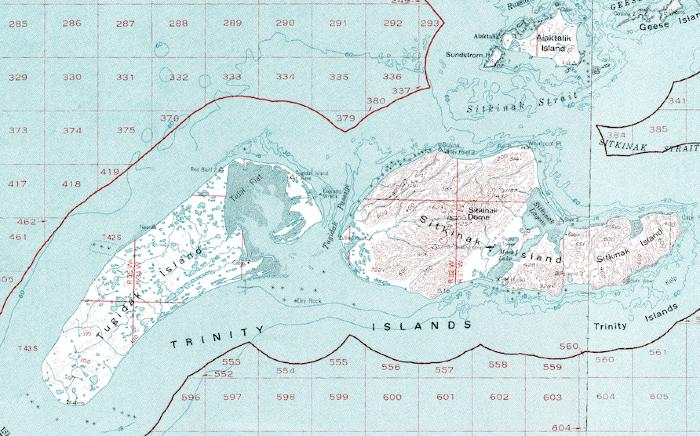Tugidak Island — Tuiy'uq

Tudigak Island lies at the southern end of the Kodiak region in the Trinity Island group. This, low oval landform is 18 miles long. It has a large, protected lagoon at its northern end, and rises to just 160 feet above sea level. Tugidak’s flat landscape, numerous small ponds, gravel and sand beaches, and cover of wet tundra make it distinct from the rocky, mountainous, brush-covered islands elsewhere in the Kodiak Archipelago.
Although no one lives on Tuiy'uq today, there was an Alutiiq village, also called Tuiy'uq, on the northwest coast of the island. People lived here until about 1840. At this time, Russian colonists relocated the survivors of a devastating smallpox epidemic to seven communities. The residents of Tuiy'uq moved to Aiaktalik with people from Sitkinak Island and villages on the Aliulik Peninsula. Although the island has not been studied by archeologists, reports of settlements with house depressions, middens, and ancestral tools confirm that Alutiiq people lived here for centuries and perhaps much longer. Some of these sites appear to be villages, others may be seasonal camps. In the historic era, Alutiiq men staged spring sea otter hunting trips from Tuiy'uq.
Alutiiq people were likely drawn to Tuiy'uq for its wealth of resources. Whales pass by the island on their annual migrations to and from the Bering Sea, and the shores of Tuiy'uq are very important habitat for harbor seal pupping and molting. Birdlife is abundant and includes both marine species and ptarmigan. The island also has five salmon streams and productive razor clams beds.
